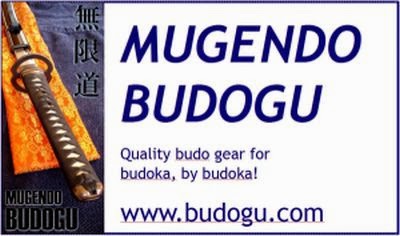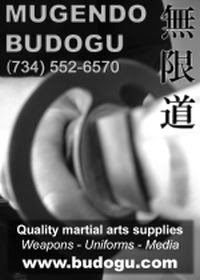There is no single essential element of good budo. There are a number of elements that make up the common foundations of all good budo, whether it is empty hand, small weapons, swords, spears and naginata or even kyubado. I wrote about structure in a previous post. Another essential principle is ma’ai 間合, often translated as spacing. This one seems simple, and turns out to be exceedingly complex and subtle.
At it’s most basic level, spacing is the distance between you and your opponent. That’s the most basic level. After this it quickly gets complicated. Ma’ai 間合 is the Japanese term, and and while it refers to distance, it also implies the proper or correct distance. The problem and complexity comes from the fact that what is the proper distance is different for every encounter.
Let’s start just with empty hand encounters to keep it simple. I’m 183 cm tall. My reach and range is longer than someone who is 160 cm tall, assuming we’re both using the same sorts of attacks. My range is longer, so I don’t need to be as close to reach out, make a connection and apply a judo technique. An opponent who is 160 cm has to come well inside my range before she can attack.
Seems simple enough. How about this then? I’m a judoka, so I’m not big with punches and kicks. So let’s assume my 160 cm opponent is now proficient at Tae Kwon Do. Oops! The ma’ai just changed significantly, and not in my favor. Now my opponents kicks are effective at a greater range than my grappling. On the other hand, if I get inside her effective range, my grappling is more effective than her striking.
So good distancing,ma’ai, changes with the person’s reach and the techniques being used. It’s the combination of your effective attacking range and your opponent’s. What’s good for one is more than likely not optimal for the other. Kendo breaks down ma’ai into several discrete ranges, which is easier in kendo because the shinai’s length is controlled to prevent major differences between kendoka. The Kendo community has analyzed their three main ranges, toma, issoku-no-maai, chika-ma (outside of attack range, attack with one step, close enough to attack without moving). Their analysis is focused on two very similar opponents with identical weapons.
Once we get outside the competitive arena with it’s requirement that things be “fair,” whatever that might be, ma’ai becomes a very fluid distance. In both gendai and koryu arts, kata are designed to teach the fluidity of ma’ai by setting up the student to practice against a variety of weapons and partners. This is true in Judo in the Kime No Kata where the student must deal with everything from grabs to strikes to knife attacks to swords. It’s true in most Aikido training as well, with a variety of tanto and sword disarms.
Many classical bujutsu systems cover the entire gamut of weapons combinations, from both persons unarmed to one person armed, to both armed with the same weapon to asymmetrically armed training. Many weapons arts mostly emphasize asymmetrical training scenarios. In Shinto Muso Ryu, the only time both partners are armed alike is in a few of the okuden forms, and seven of the Shinto Ryu kenjutsu kata. In JIkishinkage Ryu the combination is usually sword versus naginata. Most koryu arts include a variety of weapons in their curriculum.
Once we get to this variety of combinations the terms for ma’ai become much more interesting and challenging. If I’m holding a kodachi facing an opponent with a tachi, her issoku-no-maai is longer than mine.
If I switch to jo, mine is now longer than hers. If she’s got one of those giant naginata or a yari, hers is longer than mine. And then we have the variability of some types of kusarigama, but I’m not going to go there today.
The continually changing combination of an individual’s range and her weapon’s range makes ma’ai exceptionally difficult to master (and even more complicated to write about). By practicing with a variety of partners and in a variety of weapon combinations you can develop a good sense of maai. I’m starting to understand some aspects of it, but I have a long way to go.
One thing that is critical for learning learning ma’ai is that attacks have to be effective. I hear a lot about “sincere” and “committed” attacks in some arts. I’ll be honest, I really don’t care if the attack is sincere or not, and I really don’t care if it’s committed. I care about whether it will be effective. A sincere, committed attack that will never reach you is worthless for training because you will never learn at what range you are vulnerable, and at what range you are effective. The same is true for an attack that purposely misses to either side. I can’t learn how to deal with an attack that isn’t effective.
The attack doesn’t have to be fast and hard. It doesn’t have to be heavily overcommitted. It does have to be on target. That’s the key. On any number of occasions I’ve told students to “Hit me.” They swung their weapon and I didn’t move because I didn’t need to. I could see they weren’t doing anything that would impact me. I stood there and watched their weapons swing past in the breeze. Then people asked why I didn’t move. I didn’t move because my sense of ma’ai is strong enough that I can see when someone is attacking effectively and when he is just waving at empty air. Waving at empty air is not effective or threatening.
Every attack, no matter how slow, has to be such that it would impact my position. If it’s not going to do that, how am I going to learn what distance and attack is dangerous and what isn’t? If you don’t know the difference, you will fall for every feint and false attack. An effective attack is not one where you overcommit and throw yourself at your opponent either. For an effective attack you move in maintaining your balance and integrity while striking or cutting so that you will impact your partner if she doesn’t move.
As you practice kata and randori with a variety of partners and weapons combinations, you will develop a more and more sensitive understanding of ma’ai. With an understanding of ma’ai comes awareness of the difference between an empty threat, and a position that is vulnerable to attack. You will also be able to see when your opponent is open to attack on the other side. Without an understanding of ma’ai you are vulnerable to every threat and intimidating move because you won’t know the difference between an attack that will affect you and movement that cannot hurt you.
NOTE: “Ma’ai” has 3 syllables in Japanese: mah-ah-ee. In English it comes out as 2 syllables “mah-eye.”




